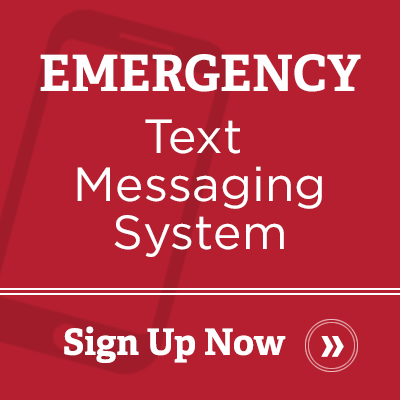
Campus receives most emergency notifications via email or text
Sign up to receive emergency alerts
Miami uses its ENS in cases of immediate threat to safety or closure of a campus/cancellation of classes.
Staff continually assess the process to try to improve message delivery. The IRT is working with IT services to soon add full-screen alerts on university-owned computers to the ENS (with a few exceptions).
All members of the Miami University community are encouraged to review the online emergency procedure information. Links to other safety information, including a 6-minute video on how to react to a shooter, are on that page.
If you are not registered yet to receive text or email messages through the e2Campus system, please go to http://www.miamioh.edu/ens. If you need assistance with your e2Campus cell phone registration, contact the IT help desk, 513-529-7900 or ithelp@miamioh.edu.
 Results of Miami University’s emergency notification system (ENS) test from Monday, Sept. 25, are positive and similar to last year’s results.
Results of Miami University’s emergency notification system (ENS) test from Monday, Sept. 25, are positive and similar to last year’s results.
Sixty-nine percent of responders to a follow-up survey said they received at least one alert within five minutes. Last year, 70 percent reported receiving a message that early.
Representatives of the Institutional Response Team (IRT) sent test messages at 1:20 p.m. via the following methods using the e2Campus program:
- Email and text message alerts.
- Informacast, the voice- and display-based feature for VoIP (Voice over Internet Protocol) telephones and blue-light emergency phone towers (Oxford campus).
- The Four Winds Interactive digital signage system.
- Miami Cable Television System.
- Miami University Oxford, Regionals, myMiami and police services websites.
- A Twitter alert on the university account.
Message received
About 38 percent of recipients responded to a survey sent to a random list of 10,000 staff, faculty and students on all local campuses.
About 92 percent of survey responders reported to have received an email alert. The majority of the remaining 8 percent who did not receive an email alert reported that they had not checked their junk mail filter or that they were not near a computer at the time of the test. Fifty-four percent received a text alert.
Nearly an even amount (1,633 vs. 1,621) said their first message was received by text or by email. A little more than 12 percent – 461 – heard the message first on a university telephone, with an additional 15 hearing it first from a blue-light phone tower on the Oxford campus.
Of 13,365 text message alerts sent to subscribers, 96 percent were delivered. Survey results showed 1,500 respondents had not registered for text alerts or were unsure if they had registered to receive text alerts.
Website messages were not consistent across browsers; staff are researching the issue.
Miami police had staff stationed near most of the blue-light towers and found all were functioning.
Also, 40 percent of survey takers were off campus when the alert was sent, but most received a text or email notice.
